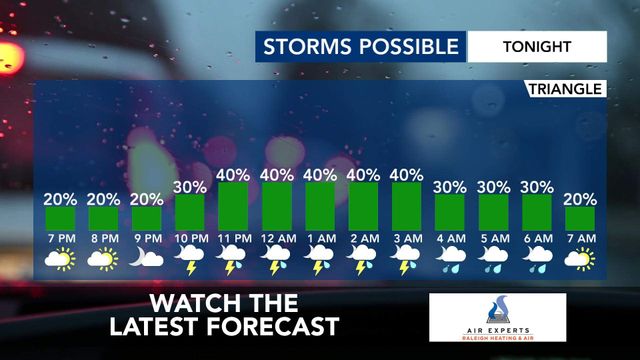NC FAST rollout continues amid myriad of challenges
State health officials say they continue to make progress on the rollout of a multi-part technological upgrade to how North Carolina residents receive social services.
Since NC FAST began in earnest in 2013, state and county workers have battled backlogs of food stamp and Medicaid cases sparked by technical problems, a boom in demand for social services and an intermittent flood of applications from the federal Healthcare.gov system.
Although backlogs remain, both county and state Department of Health and Human Services officials say the system continues to improve. But as counties gradually migrate in waves away from the 19 different systems NC FAST will eventually replace, social services workers say they think it will be a while before the labor-saving technology upgrade pays off.
Food stamp backlog triggers federal threat
Unlike other prominent state-funded IT projects, NC FAST consists of several pieces brought online in phases across the state. Food and Nutrition Services, which in North Carolina are run on the county level, were among the first to go live in late 2012 and early 2013 as local workers were trained in the new system.
The vision for NC FAST, built using IBM software and implemented by technology firm Accenture, was an attractive one to county workers who had long requested a system to unify social services that help needy and disabled state residents and their families.
"You may have seen two case workers and told your same story twice," Phillip Hardin, economic services director for Buncombe County, said. "That's not good business for our customers."
But nearly a year after most counties had switched their legacy food stamp systems over to NC FAST, shorthand for Families Accessing Services through Technology, things weren't going well.
State and county workers were scrambling to process enough cases to meet a U.S. Department of Agriculture deadline that put about $88 million in federal funding at risk. The financial threat was the culmination of months of warnings from the federal agency over a food stamp backlog that, at one point, left 70,000 clients waiting weeks for help feeding their families, according to USDA estimates.
The cause of that backlog is complicated.
On top of a new system with a new workflow, case workers were already slammed with more clients seeking food stamps. Despite the improving economy, the caseload for Food and Nutrition Services increased by 75 percent in the five-year period ending in mid-2013, according to DHHS.
A technical problem with NC FAST in July 2013 also severely slowed down processing for more than a month, pushing the backlog even higher.
State and county workers eventually met the federal ultimatum this spring, reducing the number of families waiting a month or more to only a few hundred.
But it was costly for counties, who had to rely on an all-hands approach involving overtime, temporary hires and state personnel.
A February survey by the North Carolina Center for County Research showed counties paid an estimated $5 million in overtime to implement NC FAST since the start of the fiscal year in July 2013. About 70 percent hired temp workers at a cost of $8.3 million. More than one-third of the counties needed new equipment or space for those employees.
At an April oversight meeting, DHHS leaders told state lawmakers the total cost to both the state and counties was closer to $21 million.
Most counties, according to the survey, also reassigned workers traditionally tasked with processing Medicaid cases. That strategy, according to several county directors, helped set the stage for a "double whammy."
Medicaid backlog persists, despite progress
In the lead-up to the launch of Healthcare.gov, the nationwide insurance portal created by the Affordable Care Act, federal health officials told states to prepare for a flood of applications for Medicaid as residents looked to join insurance rolls.
DHHS tweaked its system to receive the applications from the federal portal electronically. But as confusion mounted around the botched launch of the glitchy Healthcare.gov, the files came down in fits and starts.
Occasionally, they came in droves.
"The applications that come in from the federal government to us don't come in some logical way," DHHS Secretary Aldona Wos said. "They come in medium, a lot, medium, almost none, medium. So, we have, volume-wise, no way of pre-planning."
Through July 17, DHHS received 98,000 applications from the federal marketplace alone. Some were from people who also applied in other places. Many were more than 45 days old, making them already overdue.
"What this did is create not only this influx of new groups of people, but duplicates," NC FAST Director Angela Taylor said. "So, I may have applied at Healthcare.gov, but at the same time, I also came into the local office or applied through ePASS," the state's online NC FAST portal.
Meanwhile, Medicaid applications continued to roll in through more traditional means. And like food stamps, demand for Medicaid has seen a massive boom, with a 24 percent increase from 2008 to 2013.
"When we received all of those cases, counties were already stretched for resources," said John Eller, who serves as both director of Catawba County Social Services and president of the North Carolina Association of County Directors of Social Services.
Across the state, counties could historically process about 82,000 applications per month in the old system.
The influx created another mounting backlog that peaked at 104,000 just as social services workers were starting to get food stamp cases under control.
To triage the cases, NC FAST workers at DHHS filtered, corrected and simplified where they could.
"From the state side, we've done everything we can before we give it to the counties to clean it up, so that there's less work for the counties to do," Wos said.
Those languishing on the wait list are, in effect, stuck.
"For some people, they haven't been able to finish out the process of purchasing health insurance," Liz Scott, assistant director for the Wake County Division of Social Services, said. "In some cases, they just need a Medicaid denial in order to purchase subsidy insurance."
As of July 17, only about 8 percent of the applications processed from the federal marketplace have been approved for Medicaid.
Balancing complex ACA rules and the launch of the new IT system has been a challenge for DHHS – a fact Wos has stressed with some frustration several times to both reporters in interviews and lawmakers grilling her staff at oversight meetings.
"We really should be very proud of ourselves as a state that, due to our commitment to do the right thing and abide by the request of the federal government for the benefit of the citizens of this state, we did it. We did it," Wos said. "That message seems to be lost on everyone."
From waiting residents, lessons learned
The Medicaid backlog, as of July 30, stands at about 45,000 overdue applications in both NC FAST and the legacy system.
Eller said the reduction of that logjam – 57 percent in about two months as Medicaid applications continued to roll in – is a result of both an improved NC FAST system and better communication between counties and the state.
"I think all of us are having the most candid conversations we've had since the beginning of the project," Eller said. "I feel like we're being heard."
Counties have also benefited from restructuring their social services staffs – both in response to the increased demand for services and the realities of the NC FAST workflow. Hardin, in Buncombe County, said his division has spent time developing both training and internal resources to find "the right way to do business."
"Internally, we turned a little bit of a corner," Hardin said. "We got to a point where we're managing the work and the work wasn't managing us. That's a much better feeling than where we were."
In Wake County, health officials are busy hiring and training after county commissioners in February approved $1.7 million to add 36 positions. About half of the funding will come from the federal government through Medicaid administration funds.
To Wos, this is the correction of a "malalignment" in the size of county social services departments, which have been outpaced by demand in food stamps and Medicaid by nearly threefold.
"The entire state on the county level is readjusting where it’s going with its workforce," Wos said. "Both in the number and the type of workforce and in training."
This is where NC FAST will really start to help, says DHHS Chief Information Officer Joe Cooper. Instead of social services workers who have to double up if families need more than one type of benefits, the system's "universal worker" model will mean faster service on both sides of the counter.
"We’re building something that’s going to be great for North Carolina in the future," Cooper said. "You put the application in once, you put all the information in once, adding them to a new (benefit) will be a very easy thing to do."
More changes coming for NC FAST
County leaders say that, although it's much improved, NC FAST isn't benefiting them yet.
On the horizon are phases like child care and energy services. Through this fall, NC FAST programmers will launch the adult Medicaid portion, which Eller said is more complicated than the child and family Medicaid benefits already in place.
"That is a big piece of work," Eller said. "We don't yet have that quite figured out."
County directors say that, although the system is working better than it ever has, it still needs a combination of bug fixes and enhancements that will make things easier for case workers.
"There are still many things that can be done to make this a better system and not quite as cumbersome to do the work," Hardin said.
Some of these changes will require fixes from IBM, which Cooper said would be working directly with counties to prioritize fixes.
Although she acknowledges problems with the implementation of NC FAST, Wake's Scott said counties are starting to see "a light at the end of the tunnel."
"I do think we see great hope at operating at full efficiency," Scott said. "I just think it's going to take longer to get there than we originally thought."
But as the days tick down until NC FAST's scheduled completion in 2017, Wos says their progress so far proves they're getting close.
"We need to get to the end. The state has devoted, for years, too much in order to stop before we finish," Wos said. "We must continue on the path towards ultimate success, because we’re almost there."














